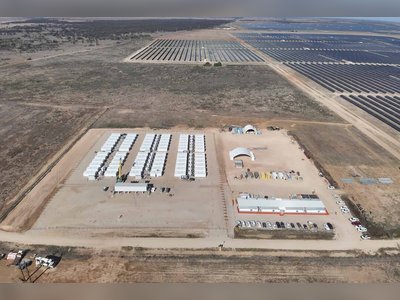
Victoria Faces Severe Rental Shortage Amid Investor Sell-off
The state sees a 3.6% decline in rental stock as first homebuyers benefit from changing market dynamics.
In 2024, Victoria experienced a significant contraction in its rental market, losing over 24,000 rental properties, which corresponds to a 3.6% decrease in the state's total rental stock.
The total number of active rental bonds, used as a proxy for rental properties, dropped from 674,462 in December 2023 to 649,978 in December 2024. The decline has been attributed largely to an accelerated sell-off by property investors, who cite unfavorable policy and tax measures instituted by the Victorian government as primary factors driving their decisions.
While the exodus of investors has raised concerns regarding rental availability, it has also created opportunities for homebuyers, particularly first-time buyers.
Individuals like Brett Gavaghan, who recently secured a home in Pascoe Vale South after a lengthy search, have expressed relief upon entering a less competitive market predominantly filled with other first homebuyers rather than investors.
Industry insights suggest a complex picture regarding the impacts of the sell-off.
Antoinette Sagaria, a director at a mortgage brokerage, cautioned against assuming that the sell-off solely benefits first homebuyers.
She noted that the reduction in active rental bonds illustrates that properties are not necessarily flooding back into the rental market, which could indicate a long-term shift rather than a temporary trend.
Data from the Australian Bureau of Statistics indicates that first homebuyers made up 28.9% of lending volume in Victoria in the fourth quarter of the previous year, suggesting a more favorable environment for this demographic than other states.
Despite predictions of impending rental rises due to lower stock, rental prices have not yet begun to reflect this anticipated surge.
According to recent figures, statewide rents increased by a modest 2.5% in the year leading up to April 2024, contrasting sharply with the 8.6% rise recorded the previous year.
Analysts highlight that while rental vacancy rates remain below 2%, indicating a tight market, the simultaneous decline in both bonds and rental demand appears to create downward pressure on rents.
This situation suggests a unique equilibrium between supply and demand that has emerged in the market post-COVID.
The decline in rental properties has been particularly pronounced in metropolitan areas, with rentals decreasing by over 4% in 2024, compared to a 1.4% fall in regional areas.
Furthermore, ongoing discussions among stakeholders in the housing sector focus on the need for governmental action to address the growing housing shortage, projected to require at least an additional 80,000 social housing units over the next ten years to meet demand.
Amid rising concerns about housing affordability, broader implications are emerging related to population growth and housing supply.
Australia’s population increased by 2.4% in 2023, one of the highest rates among developed nations, further stressing the need for expanded housing infrastructure.
Recent data indicates that new dwelling approvals remain significantly lower than previous years, exacerbating the challenges faced in delivering affordable housing solutions.
Corporate voices from within the banking sector have echoed these sentiments, emphasizing that while governmental financial support for first homebuyers is beneficial, it must be coupled with significant increases in housing supply to be effective.
National Australia Bank has projected interest rate cuts, which could potentially stimulate further demand but may intensify existing issues of housing affordability without an accompanying boost in construction.
As Victoria grapples with these complexities, the rental market dynamics continue to evolve, reflecting broader economic conditions and policy landscapes affecting both renters and buyers alike.
The total number of active rental bonds, used as a proxy for rental properties, dropped from 674,462 in December 2023 to 649,978 in December 2024. The decline has been attributed largely to an accelerated sell-off by property investors, who cite unfavorable policy and tax measures instituted by the Victorian government as primary factors driving their decisions.
While the exodus of investors has raised concerns regarding rental availability, it has also created opportunities for homebuyers, particularly first-time buyers.
Individuals like Brett Gavaghan, who recently secured a home in Pascoe Vale South after a lengthy search, have expressed relief upon entering a less competitive market predominantly filled with other first homebuyers rather than investors.
Industry insights suggest a complex picture regarding the impacts of the sell-off.
Antoinette Sagaria, a director at a mortgage brokerage, cautioned against assuming that the sell-off solely benefits first homebuyers.
She noted that the reduction in active rental bonds illustrates that properties are not necessarily flooding back into the rental market, which could indicate a long-term shift rather than a temporary trend.
Data from the Australian Bureau of Statistics indicates that first homebuyers made up 28.9% of lending volume in Victoria in the fourth quarter of the previous year, suggesting a more favorable environment for this demographic than other states.
Despite predictions of impending rental rises due to lower stock, rental prices have not yet begun to reflect this anticipated surge.
According to recent figures, statewide rents increased by a modest 2.5% in the year leading up to April 2024, contrasting sharply with the 8.6% rise recorded the previous year.
Analysts highlight that while rental vacancy rates remain below 2%, indicating a tight market, the simultaneous decline in both bonds and rental demand appears to create downward pressure on rents.
This situation suggests a unique equilibrium between supply and demand that has emerged in the market post-COVID.
The decline in rental properties has been particularly pronounced in metropolitan areas, with rentals decreasing by over 4% in 2024, compared to a 1.4% fall in regional areas.
Furthermore, ongoing discussions among stakeholders in the housing sector focus on the need for governmental action to address the growing housing shortage, projected to require at least an additional 80,000 social housing units over the next ten years to meet demand.
Amid rising concerns about housing affordability, broader implications are emerging related to population growth and housing supply.
Australia’s population increased by 2.4% in 2023, one of the highest rates among developed nations, further stressing the need for expanded housing infrastructure.
Recent data indicates that new dwelling approvals remain significantly lower than previous years, exacerbating the challenges faced in delivering affordable housing solutions.
Corporate voices from within the banking sector have echoed these sentiments, emphasizing that while governmental financial support for first homebuyers is beneficial, it must be coupled with significant increases in housing supply to be effective.
National Australia Bank has projected interest rate cuts, which could potentially stimulate further demand but may intensify existing issues of housing affordability without an accompanying boost in construction.
As Victoria grapples with these complexities, the rental market dynamics continue to evolve, reflecting broader economic conditions and policy landscapes affecting both renters and buyers alike.
AI Disclaimer: An advanced artificial intelligence (AI) system generated the content of this page on its own. This innovative technology conducts extensive research from a variety of reliable sources, performs rigorous fact-checking and verification, cleans up and balances biased or manipulated content, and presents a minimal factual summary that is just enough yet essential for you to function as an informed and educated citizen. Please keep in mind, however, that this system is an evolving technology, and as a result, the article may contain accidental inaccuracies or errors. We urge you to help us improve our site by reporting any inaccuracies you find using the "Contact Us" link at the bottom of this page. Your helpful feedback helps us improve our system and deliver more precise content. When you find an article of interest here, please look for the full and extensive coverage of this topic in traditional news sources, as they are written by professional journalists that we try to support, not replace. We appreciate your understanding and assistance.











